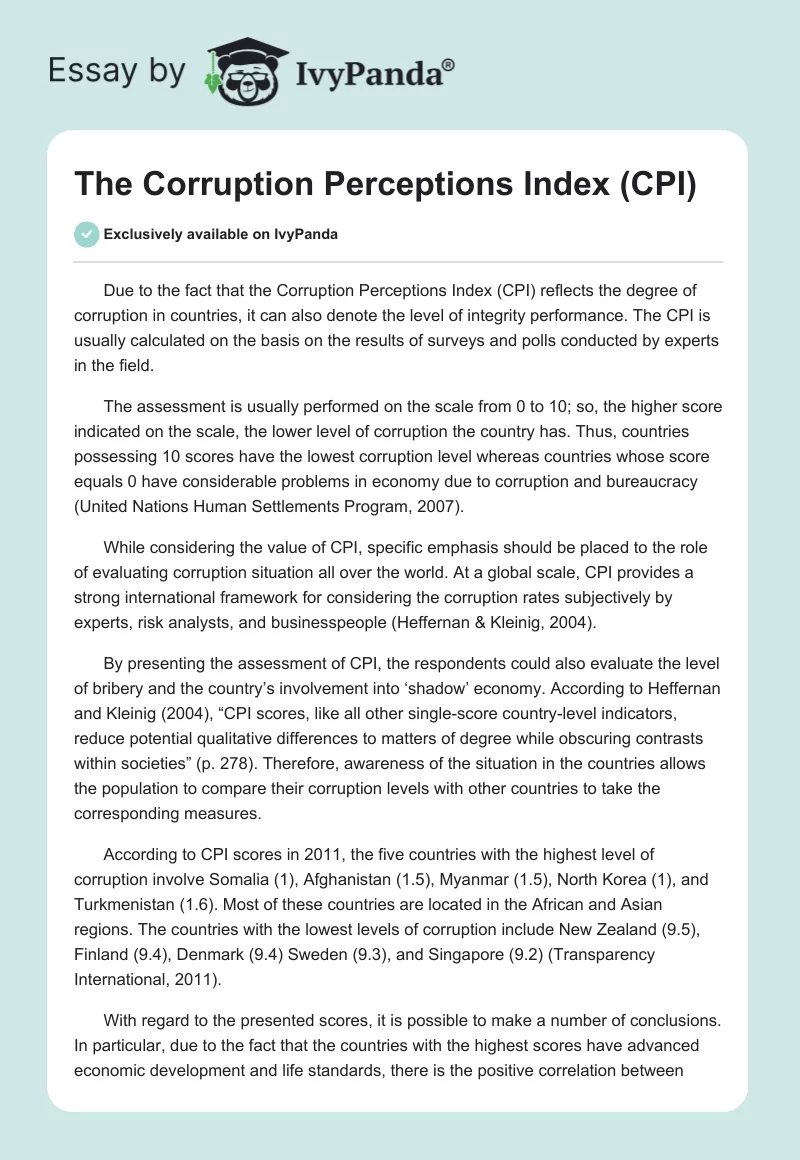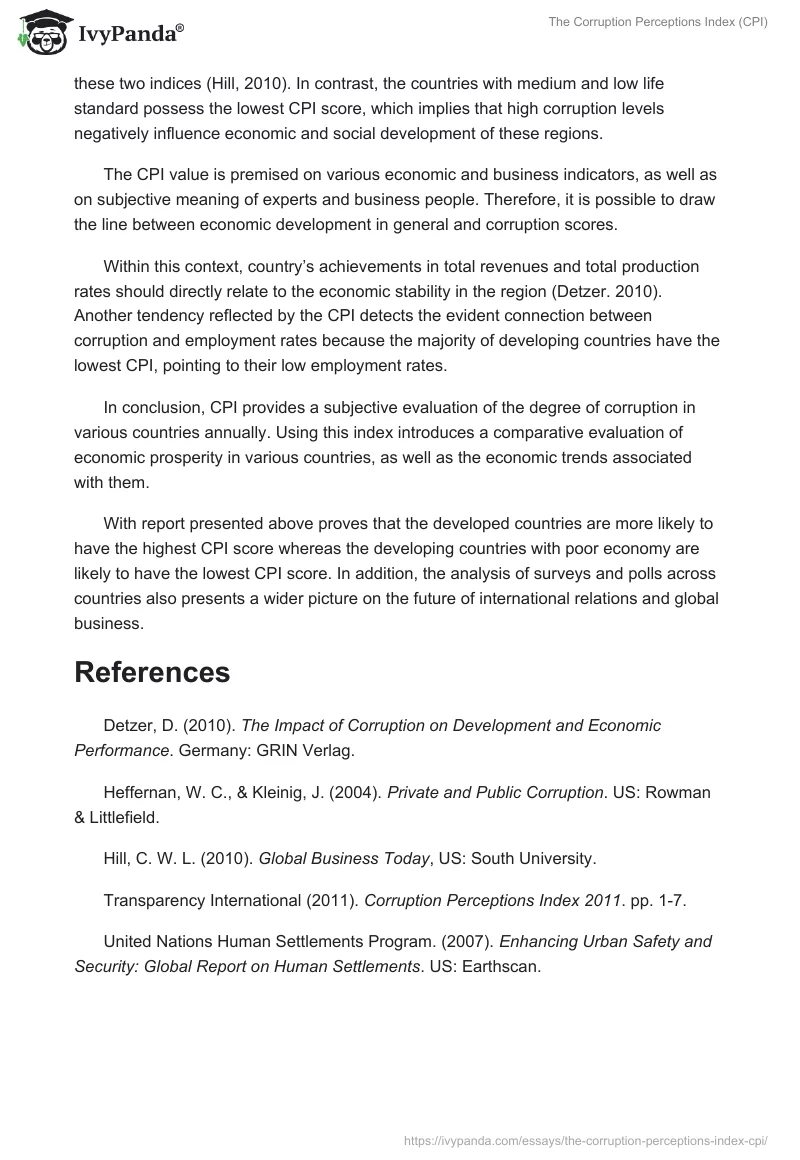Due to the fact that the Corruption Perceptions Index (CPI) reflects the degree of corruption in countries, it can also denote the level of integrity performance. The CPI is usually calculated on the basis on the results of surveys and polls conducted by experts in the field.
The assessment is usually performed on the scale from 0 to 10; so, the higher score indicated on the scale, the lower level of corruption the country has. Thus, countries possessing 10 scores have the lowest corruption level whereas countries whose score equals 0 have considerable problems in economy due to corruption and bureaucracy (United Nations Human Settlements Program, 2007).
While considering the value of CPI, specific emphasis should be placed to the role of evaluating corruption situation all over the world. At a global scale, CPI provides a strong international framework for considering the corruption rates subjectively by experts, risk analysts, and businesspeople (Heffernan & Kleinig, 2004).
By presenting the assessment of CPI, the respondents could also evaluate the level of bribery and the country’s involvement into ‘shadow’ economy. According to Heffernan and Kleinig (2004), “CPI scores, like all other single-score country-level indicators, reduce potential qualitative differences to matters of degree while obscuring contrasts within societies” (p. 278). Therefore, awareness of the situation in the countries allows the population to compare their corruption levels with other countries to take the corresponding measures.
According to CPI scores in 2011, the five countries with the highest level of corruption involve Somalia (1), Afghanistan (1.5), Myanmar (1.5), North Korea (1), and Turkmenistan (1.6). Most of these countries are located in the African and Asian regions. The countries with the lowest levels of corruption include New Zealand (9.5), Finland (9.4), Denmark (9.4) Sweden (9.3), and Singapore (9.2) (Transparency International, 2011).
With regard to the presented scores, it is possible to make a number of conclusions. In particular, due to the fact that the countries with the highest scores have advanced economic development and life standards, there is the positive correlation between these two indices (Hill, 2010). In contrast, the countries with medium and low life standard possess the lowest CPI score, which implies that high corruption levels negatively influence economic and social development of these regions.
The CPI value is premised on various economic and business indicators, as well as on subjective meaning of experts and business people. Therefore, it is possible to draw the line between economic development in general and corruption scores.
Within this context, country’s achievements in total revenues and total production rates should directly relate to the economic stability in the region (Detzer. 2010). Another tendency reflected by the CPI detects the evident connection between corruption and employment rates because the majority of developing countries have the lowest CPI, pointing to their low employment rates.
In conclusion, CPI provides a subjective evaluation of the degree of corruption in various countries annually. Using this index introduces a comparative evaluation of economic prosperity in various countries, as well as the economic trends associated with them.
With report presented above proves that the developed countries are more likely to have the highest CPI score whereas the developing countries with poor economy are likely to have the lowest CPI score. In addition, the analysis of surveys and polls across countries also presents a wider picture on the future of international relations and global business.
References
Detzer, D. (2010). The Impact of Corruption on Development and Economic Performance. Germany: GRIN Verlag.
Heffernan, W. C., & Kleinig, J. (2004). Private and Public Corruption. US: Rowman & Littlefield.
Hill, C. W. L. (2010). Global Business Today, US: South University.
Transparency International (2011). Corruption Perceptions Index 2011. pp. 1-7.
United Nations Human Settlements Program. (2007). Enhancing Urban Safety and Security: Global Report on Human Settlements. US: Earthscan.


